We asked you to send us your DIY woes to solve. We’ve picked 10 of the best (or worst, depending on how you look at it) to answer…
Q: When knocking down an internal wall, what are the things I need to look out for? Vicky Machirant

A: The first thing to find out is whether the wall is load-bearing – even a stud partition can be – and whether its presence is necessary to conform with fire regulations. Either way, it’s best to consult a structural engineer or building surveyor who can specify a beam or supporting structure, and to assume that a Building Regulations application will be needed. Your council’s Building Control officer will then inspect the work in progress on site and issue a completion certificate when it is finished. Also consider whether the supporting beam will need to rest within the party wall – in which case you’ll need a party wall agreement with your neighbour(s) – or on nibs. Other things to bear in mind: ensure the price includes the re-positioning of radiators and electrics; plastering and redecoration; cutting and refitting of skirting boards; floor leveling and repair work. Finally, be prepared for lots of mess and dust.
Q: I’ve never put up any wallpaper before. Have you got any tips for me. Alison Pearce
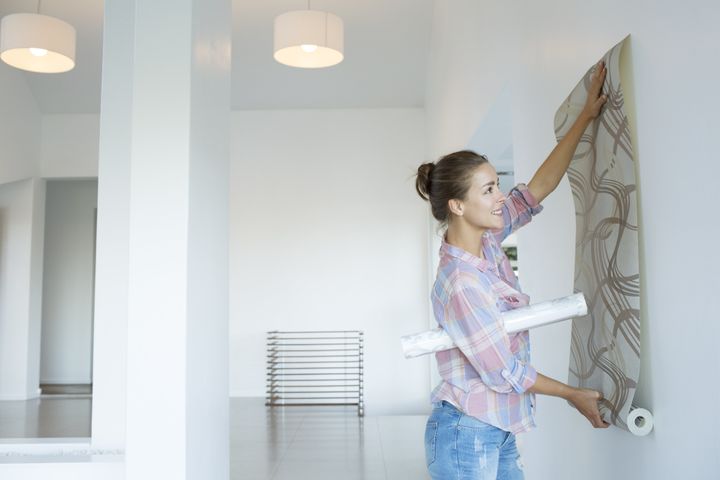
A: There are tons of good step-by-steps online, but get off to a good start and the rest should follow. First, make sure you have the right tools for the job, including a sturdy ladder. Then, ensure the wall you’re papering is dry, clean and free of lumps and bumps. If the surface is uneven, hang lining paper first (horizontally if you’re papering over it). If yours is a patterned wallpaper, hang the first length centrally over a focal point, such as a fireplace, then work away from it in both directions. Otherwise, start at a corner on a wall with no doors or windows, or at a window, working away from it. Using a spirit level and pencil, draw a vertical line on the wall to ensure the edge of your first length of wallpaper is dead straight. When you cut wallpaper lengths, always go over by about 10cm to allow for trimming at the top and bottom. If your wallpaper has a pattern, make sure you line this up before cutting the second piece, and be prepared for wastage. When pasting the wallpaper, work the brush outwards, then loosely concertina the paper so that it’s easy to transfer with both hands (to avoid tearing or stretching) from the table to the wall. Use a wall-hanging brush to smooth the paper down, again working from the centre outwards to get rid of air bubbles. Use the back of your scissors to crease the paper against the ceiling and at the skirting board then gently pull it away while the paste is still wet to cut carefully along the creases before smoothing it back into place. With two or three pieces in place, use a seam roller to ensure the joins are neat.
Q: How easy is it to freshen up kitchen cupboards with paint? They are laminate. @charliepegg
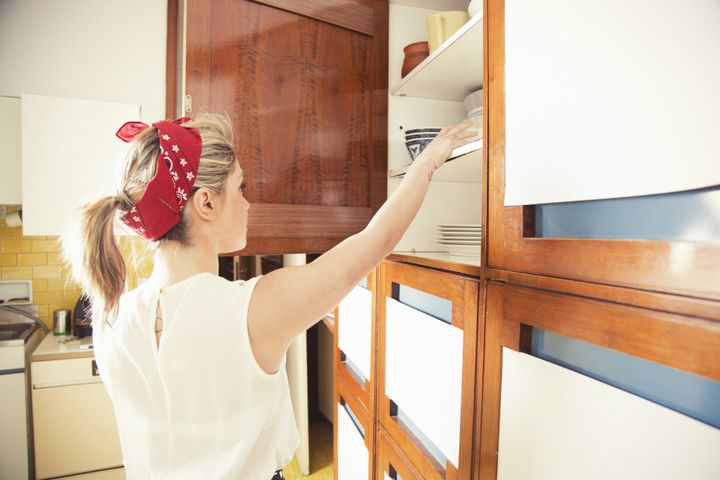
A: It’s easy – but pretty work-intensive! Start by cleaning the surfaces you are going to paint with a degreaser, then give them a light sanding to help the paint adhere. We’d advise using a hardy finish specifically designed to be painted on a cupboard (such as Dulux’s Cupboard Paint), which doesn’t need a primer. For best results, remove the doors and drawer fronts and lay them on the floor so that you can paint them flat. Numbering them as you take them off ensures they go back where they came from. Use a good quality brush to apply the finish, going with the grain, painting the backs of the doors and drawers first, then the flat panels, then any mouldings or detailing. Keep each coat of paint thin to avoid drips and uneven coverage, following the manufacturer’s instructions on the tin for drying times and to apply the recommended number of coats. Allow the doors and drawers to dry flat while you paint the cabinet frames.
Q: How can I find out if I have a damp problem in my house – or if it’s condensation? Julie Carwardine
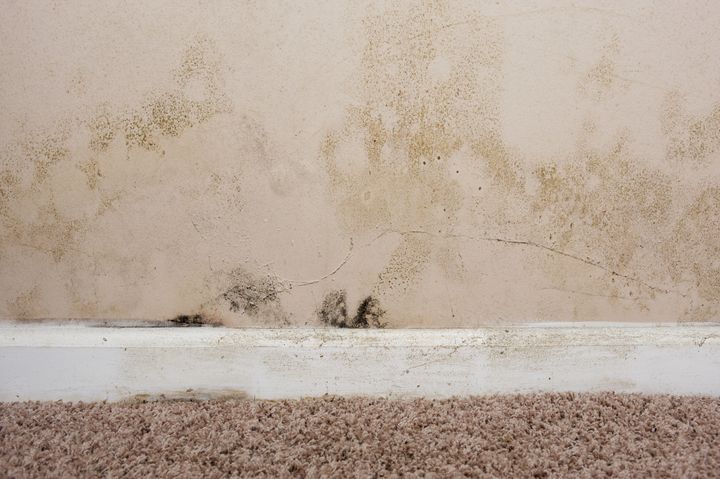
A: Clues you have either are a musty smell, mould and damage to furniture and decoration. Damp occurs when water is getting into the property from outside, either through cracks in the roof or walls (known as penetrating damp), or from the ground due a failing or non-existent damp proof course (known as rising damp). Rising damp usually leaves a tidemark, and can travel up to about 1m high on a wall; it needs to be tackled by a specialist company. Penetrative damp will be more random in its appearance but is usually more simply remedied by replacing the cracked roof tile or broken guttering, after which it should simply dry out. Condensation happens on cold surfaces where there is little movement in the air – so on and around windows, behind furniture or in the corners of rooms, for example. The solution is to try to heat each room in your home to a similar level (to avoid cold spots) and to ventilate rooms prone to condensation, either by regularly opening windows, fitting trickle vents to the frames, or by fitting extractor fans, particularly in bathrooms and kitchens.
Q: Woodchip wallpaper is the bane of my life. It is on the walls, on the ceiling, it wouldn't surprise me if I pulled up the carpets to find it on the floor. Are there any time-saving tips for getting through the laborious process of stripping it? Gareth Wild

A: You’re right, it is laborious, but there are ways to make it a little less painful. Start by scoring the paper thoroughly with a spiked hedgehog roller or a Zinsser Paper Tiger – this will allow the water to reach and soften the adhesive behind the paper, making it easier to remove. You can wet the walls in a number of ways: with a steamer, holding it on to each section of wall for no longer than 10 seconds before moving it on, meanwhile using a wallpaper scraper to remove the wallpaper you’ve wet; or, you can use a sponge, warm water and washing up liquid, soaking the walls thoroughly two or three times before taking your wallpaper scraper to it; or, try a specialist product, such as Zinsser Dif or SimpleStrip, both of which are designed to make wallpaper removal easier and quicker. Whichever method you choose, it’s vital to keep the woodchip wet – it’s nigh on impossible to remove dry sections. To avoid damaging the wall beneath, keep the scraper at a 45 degree angle (or less) to the wall. When you’re done, wash the wall down with sugar soap. Be warned, protect floorcoverings well and wear old shoes – removed strips of woodchip will stick fast to anything and everything!
Q: We have a horrible old carpet in our new house with floorboards beneath. We were thinking of putting down wood-effect laminate. Can we put laminate directly on floorboards or not? Rebecca Morgan
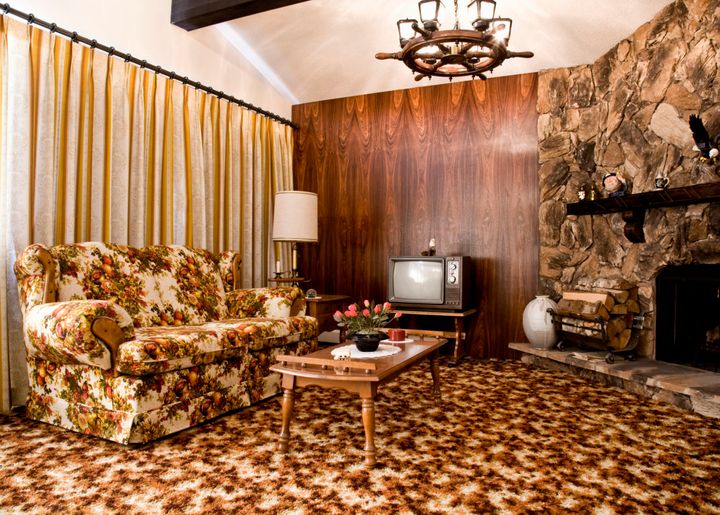
A: The short answer is no. Laminate generally needs to be laid over a suitable damp-proof membrane (at ground floor level) to reduce the risk of moisture working its way to the surface, and an underlay to absorb sound and help the floor cope with any slight unevenness. Underlays range in thickness and quality, and some come with a built-in damp proof membrane. They are usually sold side-by-side with the laminate flooring, so you shouldn’t have any trouble finding one that’s suitable and compatible. Before you lay yours, remove your carpet and any adhesive residue, and ensure the floorboards are free of debris, are dry, level and well fixed down.
Q: How do I decorate over a ceiling leak? David Jenkins
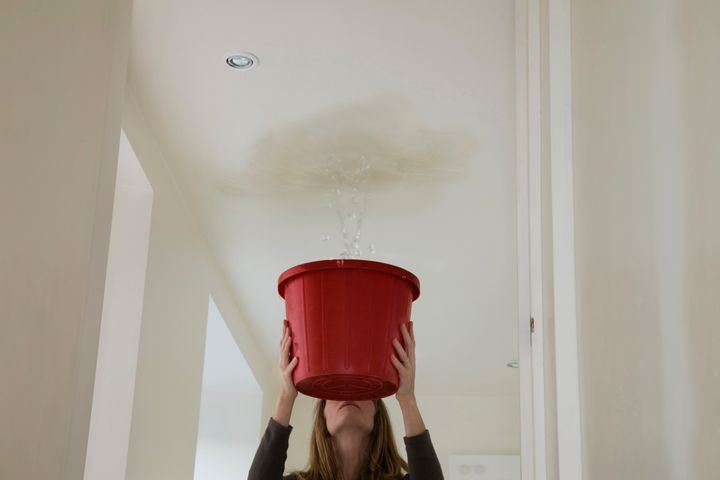
A: Assuming you have fixed the cause of the leak, allowed the ceiling to dry out and filled any cracks, you can now cover the stain. Use a stain blocker, which you can buy (or make by mixing equal amounts of oil-based undercoat and gloss together), or simply paint on a coat of oil-based paint. Once that’s dry, you can emulsion or paper over it, safe in the knowledge that the stain shouldn’t show through again. You may need to repaint the whole ceiling in your topcoat to get an even finish.
Q: What’s the best way to seal around a bathtub? Rob Forrest
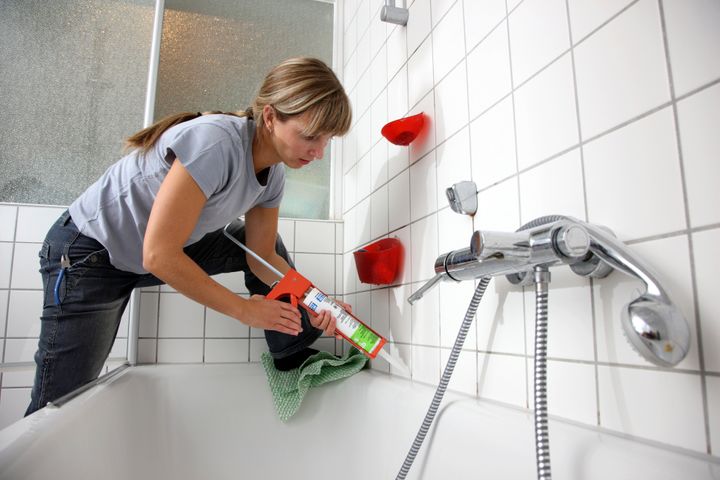
A: You need to use a waterproof silicone sealant – and you can apply it yourself pretty easily. First use a Stanley knife to remove any old silicone, cutting it horizontally and vertically before peeling it off. Remove any residue with a blunt knife or silicone remover, and clean the area thoroughly, before allowing it to dry. If yours is an acrylic bath, fill it with warm water. Cut the tip of the silicone tube at an angle of 45 degrees – this gives you best control over the amount of silicone released. Load it into a silicone gun and pull the trigger to move the silicone into the tip, holding it over a bin bag or newspaper while you practise getting the flow right. Hold the tip at an angle of 45 degrees just above the seam, press the trigger slowly and smoothly and allow the caulk to flow along the seam, creating a uniform bead. Try to release and press the trigger again before the flow stops so that the bead remains even, and only stop when you get to the corner of the bath, releasing the handle and pulling back on the gun to eliminate any strings (think melted mozzarella). Use a wet finger or silicone smoother to gently shape the silicone into the seam, creating a neat seal. Do this working in from each corner, meeting in the middle to create a neat finish. Have a bowl of water and kitchen roll handy to keep your finger/silicone smoother both clean and wet. Allow to dry before draining the bath.
Q: How can I paint emulsion over existing wallpaper that's looking a bit tired. I don't think it is vinyl. Fiona Tull
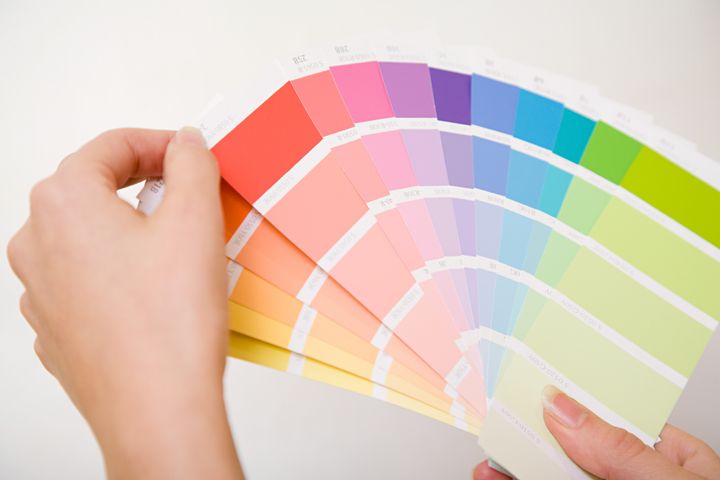
A: First, you’ll need to clean the wallpaper with sugar soap, allowing the wall to dry thoroughly. Check for bumps, dents and tears in the paper – these will be much more obvious once the wall is painted. If you need to, use wallpaper paste to fix down any corners or edges that are peeling. Go over the walls with a fine sandpaper, then wipe off all traces of dust. Next, it’s worth brushing on a coat of oil-based primer to stop the wallpaper beneath from loosening when it is painted. Once dry, check and fix any imperfections, sand the walls lightly again with a fine grade sandpaper before adding your emulsion topcoat. Follow the paint manufacturer’s recommendations for drying times before adding a second coat. If coverage is still not good enough, you may need a third.
Q: My stair banister is currently stained mahogany. Can I paint it white and how? @blueberryheart1
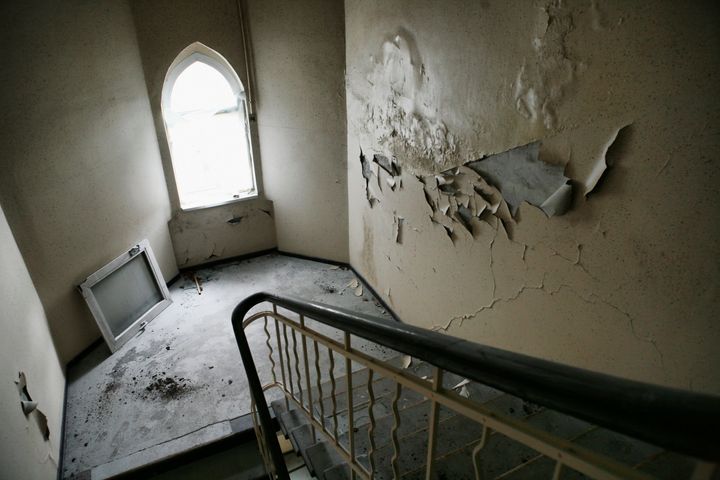
A: Start by lightly sanding the entire banister with extra fine sandpaper, removing sanding dust thoroughly afterwards. Then apply a good quality white or light grey solvent-based primer, such as Dulux Aluminium Wood Primer, which will hold back the stain. Brush on with the grain, then allow it to dry completely. Apply a topcoat of oil-based white paint, again brushing with the grain. Allow to dry before painting on a second coat – stick to the manufacturer’s instructions for drying times. To get good coverage, you may need to add a third coat.